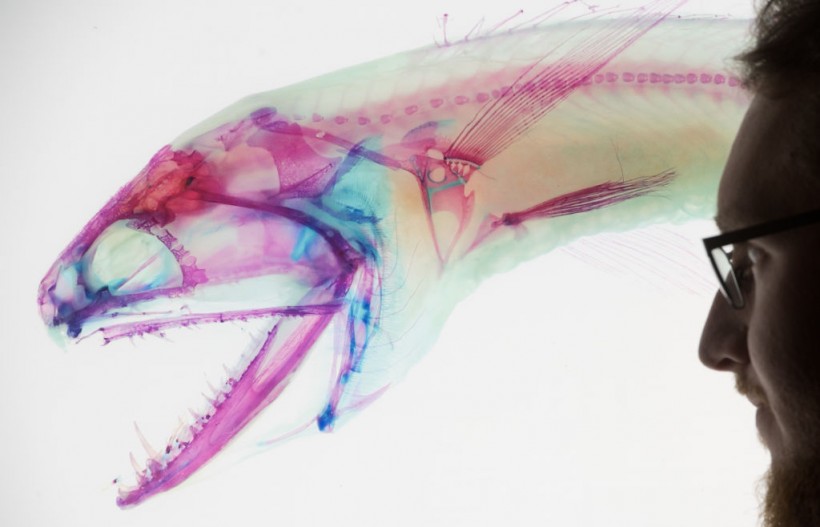Marine biologists from the Monterey Bay Aquarium Research Institute (MBARI) have been exploring the bay's depths using remotely operated vehicles (ROVs) to find wondrous deep-sea creatures. In their recent expedition in California, MBARI scientists shared that they spotted a rare deep-sea fish called the highfin dragonfish (Bathophilus flemingi).
The species is the most elusive among dragonfish species and was found at 980 feet (300 meters). Scientists have spotted living highfin dragonfish only a handful of times.

A man looks at a picture of a barbeled dragonfish to be presented in a special exhibition titled "InsightFish" on March 7, 2018 at the German Oceanographic Museum (Meeresmuseum) in Stralsund, northeastern Germany.
Tiny Bronze Submarine
Researchers at MBARI said that it was the fourth time they have captured a highfin dragonfish in more than three decades. MBARI senior scientist Bruce Robinson and colleagues spotted the exceptionally rare fish while onboard the research vessel Western Flyer and exploring the Monterey Bay.
The video shows a shimmering dragonfish swimming through California's waters just outside the bay. Robinson said that the color of these amazing animals is part of what makes them appealing.
The shimmering scales of the highfin dragonfish have a metallic bronze hue that is unique in all fish species in the deep sea. He told Live Science that the pigments that lend the color of the scales might be a form of camouflage as they absorb the remnants of the blue light as it goes down deep into the sea, rendering it invisible to its environment except when a light is shown towards it.
MBARI has shared footage of the highfin dragonfish on YouTube, with one saying it looked like a "tiny bronze submarine." Another described it as a "deep-sea Toblerone."
When the camera is not focused on the fish, it looks much different given that it lives in an environment that is either dim or totally dark. Robinson also said that he has seen many other Bathophilus species with silvery sides that reflect ambient light to help them blend into their environment. Some were bronze, while others were copper, brass, and even metallic green.
ALSO READ: Underwater Robot Begins Mission to Track Elusive Deep-Sea Creatures
Dragonfish Uses Camouflage and Bioluminescence to Lure Its Prey
The camouflage feature protects the dragonfish from its predators at the same time, it serves as their predation technique, according to IFL Science. It will hang motionless in the water until a prey strays within its reach and it will suddenly snap the unlucky animal using its large jaws.
Additionally, the team said that the dragonfish would use bioluminescence to lure prey that sees the bright spot for thinking that it is something small enough to eat. When the prey approaches the light, the dragonfish will open its toothy jaws and chomp down on the animal.
Scientists hope to learn more about the elusive deep-sea creature that remains a mystery today since it lives in depths that researchers rarely reach. Also, they hope that their rare snippet of footage will contribute to the understanding of the dragonfish and be incorporated into a variety of ongoing studies that explore the prey attraction behavior and pigmentation pattern changes of deep-sea creatures.
Watch the video from MBARI scientists of the highfin dragonfish below:
RELATED ARTICLE: Giant Squid Bigger Than a Toddler Washed Ashore in Cape Town After Similar Massive Creature Was Spotted in Japan
Check out more news and information on Fish in Science Times.














